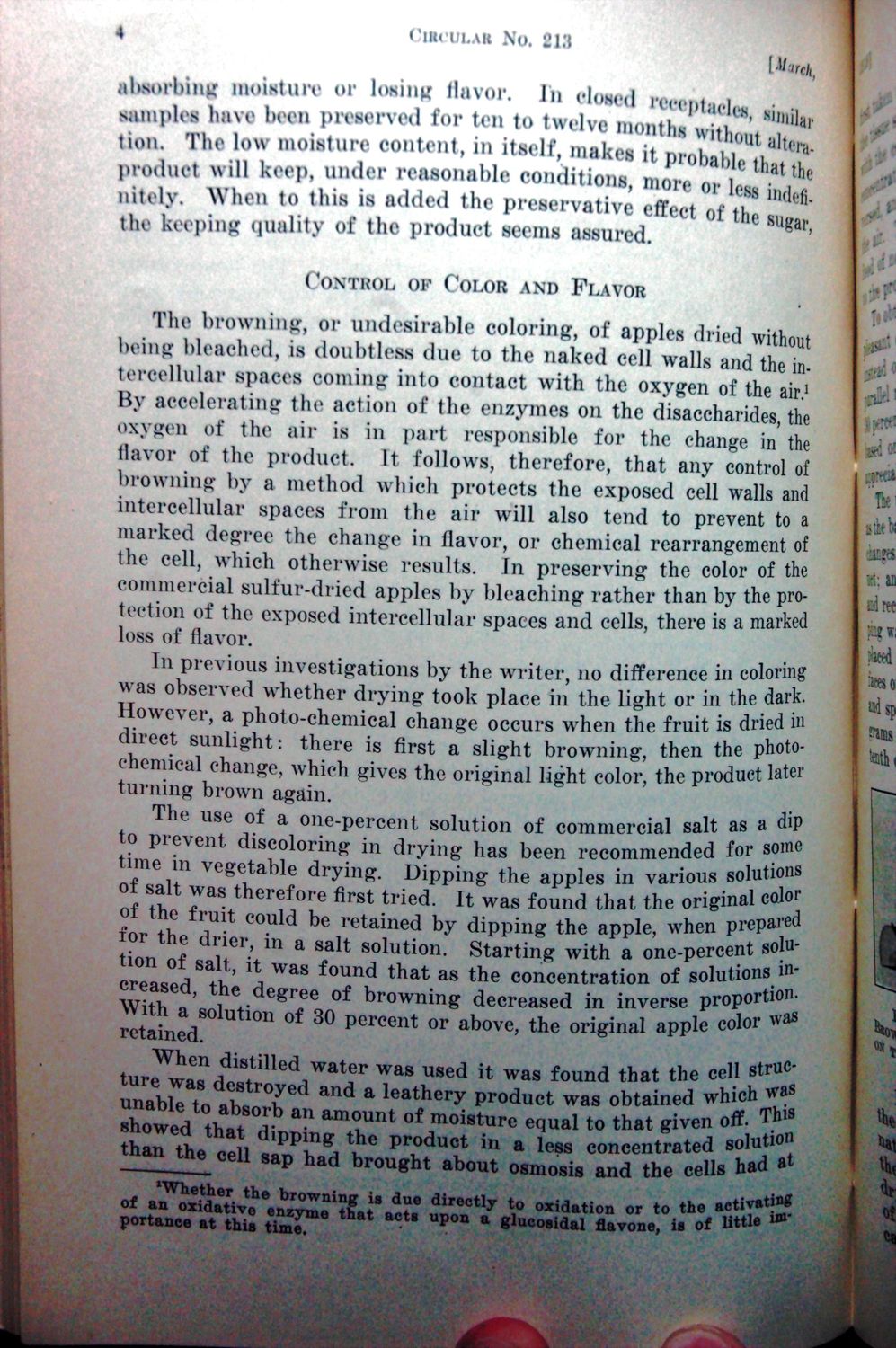| |
| |
Caption: War Publications - WWI Compilation 1923 - Article 36
This is a reduced-resolution page image for fast online browsing.

EXTRACTED TEXT FROM PAGE:
4 ClU.ULAR N o . LI.J \U*T* l->lTch ••barbing "»tliiv or losing ll.-iM.r. I „ ,|,, S ( ,| si, ila1, ~ • * • samples IKI\O been preserved for ten to twelve months "i ' ' " ;i tioa Thr low moisture content, in itself, makes it or,T\T" Itl'oilnct u ill kr.'tt • nitrlv. I>reservative ( seems assured CONTROL OP COLOR AND FLAVOI ^ The browning, or undesirable coloring, of apples dried without | being bleaehed, is doubtless due to the naked cell walls and the in1 tereellular spaces coming into contact with the oxygen of the air. sikl' By accelerating the action of the enzymes on the disaccharides, the oxygen of the air is in part responsible for the change in the flavor of the product. It follows, therefore, that any control of browning by a method which protects the exposed cell walls and p ' Hie intercellular spaces from the air will also tend to prevent to a J marked degree the change in flavor, or chemical rearrangement of j z2 * the cell, which otherwise results. In preserving the color of the ist:U commercial sulfur-dried apples by bleaching rather than by the protection of the exposed intercellular spaces and cells, there is a marked H^H HI loss of flnvnv In previous investigations by the writer, no difference in coloring was observed whether drying took place in the light or in the dark. However, a photo-chemical change occurs when the fruit is dried in direct sunlight: there is first a slight browning, then the photoenemical change, which gives the original light color, the product later turniner brown n™ ™ r » ' turning uiuwn again. --x^.xi^ The use of a one-percent solution of commercial salt as a dip io prevent discoloring in drying has been recommended for some time m vegetable drying. Dipping the apples in various solutions a s t h e r f o r e first t r i of t i r + ^ ed. It was found that the original color be retained for ih A by dipping the apple, when prepared m a Salt soluti tint, J S a u • W a S f U n d t ho n .a s Starting with a one-percent solu» at the o r P « ^ i ' A gF ee ° f b r o w n i concentration of solutions inW i t h n ' i i +, ° * S decreased in inverse proportion, with a solution of 30 percent or « W « *.« ^ ^ . . i „™i„ ™1nr was retained. When W a s U 8 e d h w a s fo ture ™ £Z A * und that the cell struca n da l e a t h e r y rodu unab^/^y P <* was obtained which was uuauie to absorb an flmnim^ ~*m o i:_..__ . . «• rrvns ,ta showed that H ^ " *ve P r°* d u c t i n "a equal to that given off. TM" C Ia nc e l l t ^ ^ .° less concentrated solution _ _ _ ^ cell sap had brought about osmosis and the cells had at Wheth enzyme portance at thi 8 time. 3W8 0 I ' I p> 1*1 Sp < * * ! » 1 e
| |